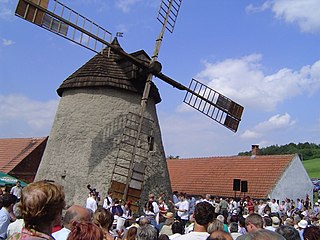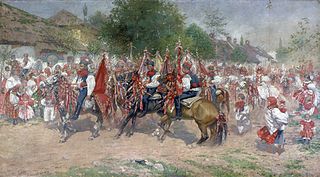
Carnival is a Western Christian festive season that occurs before the liturgical season of Lent. The main events typically occur during February or early March, during the period historically known as Shrovetide. Carnival typically involves public celebrations, including events such as parades, public street parties and other entertainments, combining some elements of a circus. Elaborate costumes and masks allow people to set aside their everyday individuality and experience a heightened sense of social unity. Participants often indulge in excessive consumption of alcohol, meat, and other foods that will be forgone during upcoming Lent. Traditionally, butter, milk, and other animal products were not consumed "excessively", rather, their stock was fully consumed during Shrovetide as to reduce waste. This festival is known for being a time of great indulgence before Lent, with drinking, overeating, and various other activities of indulgence being performed. For example, pancakes, donuts, and other desserts are prepared and eaten for a final time. During Lent, lacticinia and animal products are eaten less, and individuals make a Lenten sacrifice, thus giving up a certain object or activity of desire.

Saint Stephen's Day, also called the Feast of Saint Stephen, is a Christian saint's day to commemorate Saint Stephen, the first Christian martyr or protomartyr, celebrated on 26 December in Western Christianity and 27 December in Eastern Christianity. The Eastern Orthodox churches that adhere to the Julian calendar mark Saint Stephen's Day on 27 December according to that calendar, which places it on 9 January of the Gregorian calendar used in secular contexts. In Latin Christian denominations, Saint Stephen's Day marks the second day of Christmastide.

Victory in Europe Day is the day celebrating the formal acceptance by the Allies of World War II of Germany's unconditional surrender of its armed forces on Tuesday, 8 May 1945; it marked the official end of World War II in Europe in the Eastern Front, with the last known shots fired on 11 May. Russia and some former Soviet countries celebrate on 9 May, as Germany's unconditional surrender entered into force at 23:01 on 8 May Central European Time; this corresponded with 00:01 on 9 May in Moscow Time.

Naadam is a traditional festival celebrated in Mongolia, Inner Mongolia and Tuva Republic. The festival is also locally termed "eriin gurvan naadam", "the three games of men".

Zlín Region is an administrative unit of the Czech Republic, located in the south-eastern part of the historical region of Moravia. It is named after its capital Zlín. Together with the Olomouc Region it forms a cohesion area of Central Moravia. It is located in the eastern part of the Czech Republic, where the borders with Slovakia are formed by its eastern edge. It borders the South Moravian Region in the southwest, the Olomouc Region in the northwest and the Moravian-Silesian Region in the north. Culturally, the region is composed of parts of three traditional Moravian regions: Haná, the Moravian Slovakia and the Moravian Wallachia, as the city of Zlín lies roughly at their tripoint.

Epiphany, also known as "Theophany" in Eastern Christian tradition, is a Christian feast day commemorating the visit of the Magi, the baptism of Jesus, and the wedding at Cana.

Levice is a town in western Slovakia. The town lies on the left bank of the lower Hron river. The Old Slavic name of the town was Leva, which means "the Left One".

Kroje are folk costumes worn by Czechs and Slovaks. Gothic influence is seen in tying shawls and kerchiefs on the head. Fine pleats and gathered lace collars typify the Renaissance era. From Baroque bell-shaped skirts to delicate Slavic patterns, these folk costumes show the complex growth of Czech and Slovak traditions.

Bad Kötzting is a town in the district of Cham, in Bavaria, Germany, near the Czech border. It is situated in the Bavarian Forest, 15 km (9.3 mi) southeast of Cham.

Vlčnov is a municipality and village in Uherské Hradiště District in the Zlín Region of the Czech Republic. It has about 2,900 inhabitants.

Hluk is a town in Uherské Hradiště District in the Zlín Region of the Czech Republic. It has about 4,300 inhabitants.

Moravian traditional music or Moravian folk music represents a part of the European musical culture connected with the Moravian region of the Czech Republic. Styles of Moravian traditional music vary by location and subject, but much of it is characterized by a specific melodic and harmonic texture related to the Eastern European musical world. According to Czech musicologist Jiří Plocek, Moravia is the area where the European East musically meets the West.

Horňácko is an ethnographic microregion situated in the Hodonín District, South Eastern Moravia, Czech Republic. The region is home to approximately 10,000 people. It is significant for its traditional folk culture, especially the folk music. The region hosts annually the Horňácko Folk Festival.
The Folklore of Belgium is extremely diverse and reflects the rich legacy of cultural and religious influences which have acted on the region throughout its history, even before the establishment of the nation of Belgium in 1830. Much of Belgian folklore is unique to the region in which it is commemorated. Many aspects of folklore are manifested in public processions and parades in Belgian cities; traditions which are kept alive for the amusement of locals and tourists alike.

Czech folklore is the folk tradition which has developed among the Czech people over a number of centuries. Czech folklore was influenced by a mix of Christian and pagan customs. Nowadays it is preserved and kept alive by various folklore ensembles uniting members of all ages, from children to seniors, showing their talent during competitions, folklore festivals or other performances.

Ijele Masquerade, known as the biggest Masquerade in Sub-Saharan Africa, is a tradition of the Igbo people of Nigeria and was listed in the UNESCO Archives as an intangible cultural element in need of urgent safeguarding. In many communities in the state of Anambra in South-Eastern Nigeria, celebrations, burial ceremonies and other special occasions during the dry season to evoke fertility and a bountiful harvest feature the performance of the Ijele masquerade.

The national symbols of the Czech Republic are flags, heraldry, cultural expressions and other symbols that represent the Czech Republic, Czech people and their history, culture and nationhood. There are six official symbols which are declared in the Constitution of the Czech Republic. However many other historical, cultural and geographical symbols of the Czech republic and Czech people do exist.
The Inter-City Intangible Cultural Cooperation Network (ICCN) is the only international organization of local governments and cultural organizations that aim to safeguard the world’s Intangible Cultural Heritage. The ICCN has been working to explore creative and effective policies for the safeguarding of local Intangible Cultural Heritage and its inseparable relation to sustainable local development. Furthermore, we aim to make cultural peace based on mutual understanding formed through intercultural dialogue.

The Ride of Kingsis an 1892 painting by the Czech artist Joža Uprka.

Slavic carnivals are known under different names in various Slavic countries: Macedonian: Прочка, romanized: Pročka; Bulgarian: Сирни заговезни, Прошка, Поклади, romanized: Sirni zagovezni, Proshka, Pokladi; Russian: Масленица, Мясопуст, romanized: Maslenitsa, Myasopust; Polish: Ostatki, Mięsopust, Zapusty; Czech: Masopust, Šibřinky, Ostatky; Slovak: Fašiangy; Slovene: Mesopȗst, Pust, Pustni teden, Fašnk; Serbian: Покладе, Проћка / Poklade, Proćka; Croatian: Pust, Poklade, Mesopust, Fašnik. They are traditional Slavic festivals related to the period of carnival.





















